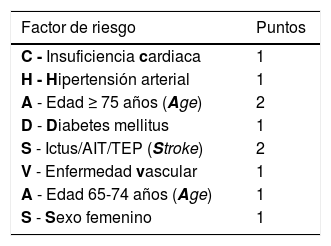Los fármacos anticoagulantes y antiagregantes son ampliamente utilizados con indicaciones médicas diversas. Por tanto, hay cada vez más pacientes que precisan una cirugía oftalmológica programada y se encuentran en tratamiento con esta medicación. El conocimiento de sus implicaciones y su correcto abordaje perioperatorio permite reducir complicaciones quirúrgicas y efectos adversos en los pacientes. En muchas ocasiones no hay una recomendación clara sobre cómo actuar con estas familias de fármacos en determinadas cirugías.
ObjetivoRealizar una revisión bibliográfica sobre el manejo perioperatorio de los antiagregantes y anticoagulantes en cirugía oftalmológica.
Material y métodosSe revisan los protocolos y la literatura existente acerca del empleo de dichos fármacos en diversas cirugías oftálmicas: catarata, vítreo-retina, glaucoma, cirugía oculoplástica y orbitaria y estrabismo.
ResultadosSe referencian guías clínicas y estudios que recogen las recomendaciones acerca del mantenimiento o suspensión de antiagregantes y anticoagulantes en diferentes campos quirúrgicos de la oftalmología.
ConclusionesEn la cirugía de catarata mediante facoemulsificación con anestesia tópica existe evidencia de que el mantenimiento de la medicación antitrombótica es seguro. En el resto de las cirugías oftalmológicas se debería actuar en función del riesgo hemorrágico y trombótico que presente la cirugía y el paciente para su correcta utilización. En casos complejos, se recomienda un abordaje multidisciplinar. Serían necesarios más estudios para la confección de guías clínicas que facilitasen el manejo perioperatorio de estos fármacos en cirugía oftalmológica.
Anti-thrombotic drugs (antiplatelets and anticoagulants) are widely used for different clinical reasons. This means that there are an increasing number of patients undergoing elective ophthalmic surgery that are being treated with these drugs. A better knowledge of their implications and their peri-operative use may help to prevent surgical and secondary adverse events. There is often no firm recommendation on how to manage certain drugs in certain surgeries.
ObjectiveTo review the recommendations in the scientific literature as regards managing anti-thrombotic agents during the peri-operative period of ophthalmic surgery.
Material and methodsA review was made of the relevant guidelines and studies using an antiplatelet and anticoagulant drugs approach for cataract, vitreo-retinal, glaucoma, oculoplastic, and strabismus surgeries.
ResultsRecommendations about whether to continue or discontinue anti-thrombotic drugs in the peri-operative period of different ophthalmic surgical fields are presented.
ConclusionsThere are only firm recommendations of maintaining anti-thrombotic drugs as regards cataract surgery using phacoemulsification with topical anaesthesia. In other surgical fields, ophthalmologists should balance the risk of thromboembolic events and risks of haemorrhagic complications in order to carry out a proper management. A multi-disciplinary approach is recommended for complex cases. Additional studies should be performed to better characterise the peri-operative use of anti-thrombotic agents in order to prepare clinical guidelines for ophthalmic surgery.
Artículo
Comprando el artículo el PDF del mismo podrá ser descargado
Precio 19,34 €
Comprar ahora













